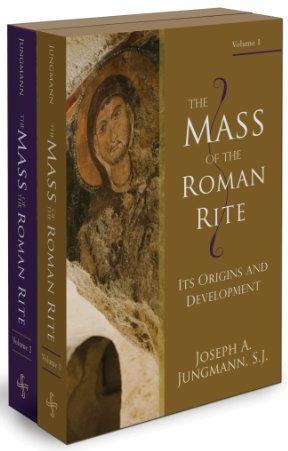Jeg skal det kommende halvåret studere meseen fra ca 1200 til ca 1600, og begynte derfor å lese Jungmanns grundige bok fra der han begynner å beskrive denne perioden, som han kaller den gotiske perioden. Han definerer denne med at en viss individualisme hadde begynt å tre fram, men også et behov for systematisering. Han skriver i andre avsnitt at den daglige fellesmessen i kloster og domkirker var den viktigste, men at det også ble feiret (som også før denne tid) en del private messer. Man hadde inntil ca 1200 brukt flere bøker i messen, men da begynte en Missale Plenum å erstatte de tidligere bøkene:

Someone has said, and rightly, that Gothic is in a special degree not only an art style (Kunststil) but a period style (Zeitstil). Because up till now the younger peoples of the North had studied zealously in the school of the older order of things, propriety and proportion, as they appeared in Romanesque, could become the expression of their life. But their growing powers were beginning to spring the old grooves on all sides, seeking newer designs. The individual and subjective, seeing and feeling on one’s own personal activity and personal capability—these came to the fore, and led to a stressing of the concrete and realistic, and consequently to a multiplicity of forms which could be kept together and coherent only by a renewed desire for organization. This new spirit did not call a halt even with regard to divine service; the arrangement of the Mass felt its influence in a most profound manner. Already there was talk of that multiplicity of forms which had developed after the year 1000, but an effort was also made to codify the new forms; we can see in this a parallel to an attempt at mastering the heaped-up resources of knowledge by means of the summas which have been ranged side by side with the daring architecture of the Gothic cathedrals.
At least in the eleventh-century community, forces still held the balance of power in ecclesiastical life and the life of divine worship. Beside the cathedral chapter there was in every larger place, and often also in the country, a collegiate chapter in which clerics under the leadership of a provost or dean led a life in common, and above all conducted a community service of worship. In contrast to them the clerics who were individually in the service of the nobility remained absolutely in shadow, especially since most of them lacked any higher education. For these capitular churches, and for Roman church architecture in general, a characteristic was the roomy choir with its stalls, no longer set in a half-circle around the altar but arranged in several parallel rows between altar and people. The daily conventual Mass, which was celebrated, as in the monasteries, in the presence of the assembled clerical community, formed the crown of choir prayer and the very climax of divine service. In the Mass regulations and in the rubrics of the liturgical books this community service is almost the only one considered; there the celebrant appears nearly always accompanied by deacon and subdeacon, even though private celebration is not unknown. Above all, however, the entire setting of the liturgical texts is still always predicated on the cooperation of a plurality of officials and ministers. The priest needs only the sacramentary. Lectionary and antiphonary continue to be separate books for the use of those who are to read or sing. This situation continues to prevail till about the start of the twelfth century.
But then a new arrangement of the liturgical books breaks into the picture; on the strength of this the priest can take over the roles of lector and chanter and thus discharge the duties of his office independently of them. The ties of the individual are thus loosed in the liturgy, just as in this same period the organization of the canonries had slackened or even dissolved with the trend towards personal prebends and separate residences. In the thirteenth century the Missale Plenum displaces the sacramentary.’ Presages of this new arrangement were the many silent prayers which, as we have seen, had begun to appear in the sacramentaries, at first (since the ninth century) only here and there, but since the eleventh almost universally. These prayers the priest did not have to perform with the community, but softly by himself.
There are isolated instances, especially within the confines of monasticism, where even at an earlier period the priest’s Mass book was fitted out with the lessons, so that the service of a lector could be dispensed with.’ Such books were very likely intended for the convenience of wandering monks, as may also be judged, in the case of the Missal of Bobbio, from the smallness of the book. In the church of Milan too, the oldest sacramentaries almost all incorporate the readings.’ Since the ninth century there appeared at various places sacramentaries in which, appendix fashion, a number of Masses with readings are inserted, sometimes also with the chant-texts. As a rule, in fact, the Masses of the commune and the Missce diversce, along with the Votive Masses, including the Masses for the Dead, were thus distinguished. Votive Masses and Masses for the Dead were employed essentially in the interests of individual families and persons, and especially if they followed each other in rapid succession, were held in the simplest form, often without the lector whose presence was, as a rule, still presumed.
………….
